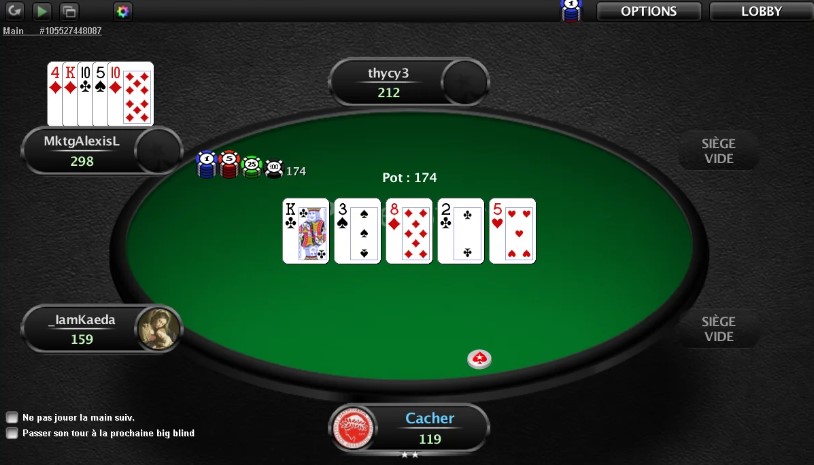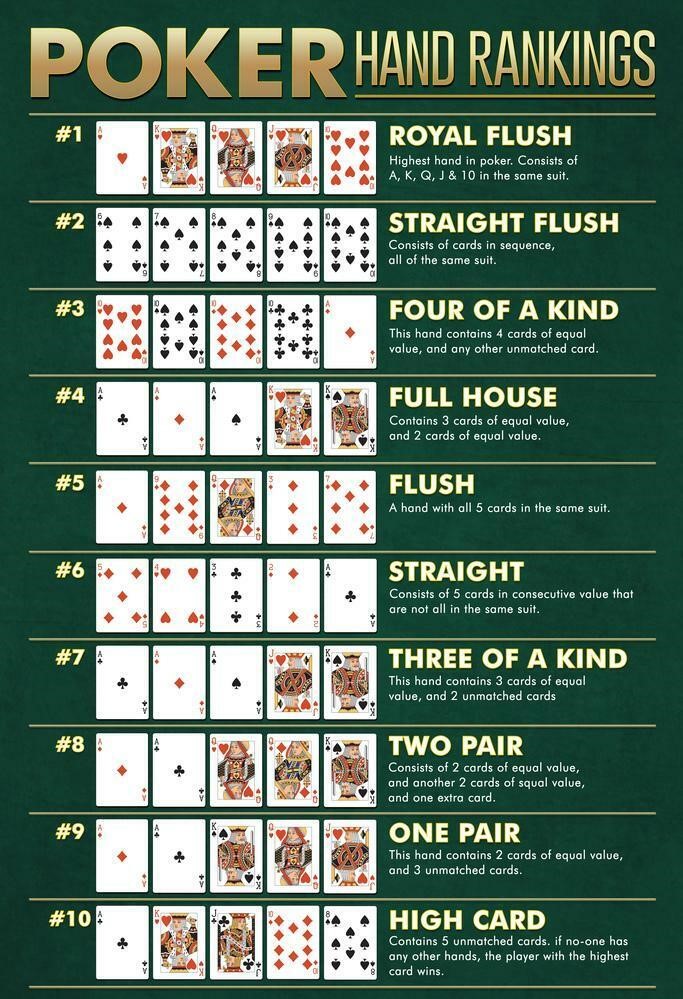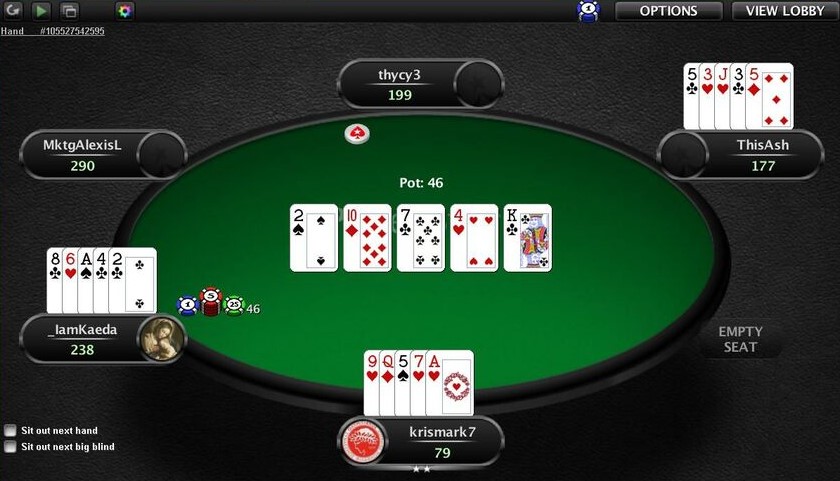Courchevel Poker – Rules, Strategies, Formats
Courchevel is a variation of 5-card poker that is popular among enthusiasts of open-board games. This means that participants use not only their hole cards but also the community cards on the table to form their hands. We will explain how to play Courchevel, the formats it comes in, and where you can play it.
Rules of the Courchevel Poker
For those familiar with Texas Hold’em and Omaha, learning the rules of Courchevel should be relatively straightforward, as these games share many similarities. However, there are certain nuances unique to Courchevel.
Each hand of Courchevel poker begins with the formation of the initial pot. To do this, the two players seated to the left of the button post the small blind and big blind, which are mandatory bets. The size of these blinds depends on the table’s limit.
In each new hand, the button moves one position clockwise, ensuring that all players take turns posting blinds throughout the session, as opposed to just two designated players.
After the initial pot is formed, the main game begins:
- Each player is dealt 5 cards, which are revealed openly, making them visible to all players. An additional card is immediately placed face-up on the board.
- Players engage in a round of betting during which they can place bets equivalent to the size of the big blind, call to match the previous bet, raise (re-raise), or fold their hands. In subsequent betting rounds, players can also check, allowing them to pass the action to the next player.
- After the betting round, two more community cards are revealed on the board. Players then continue to make bets, increasing the size of the current pot.
- The next stage reveals the fourth board card, followed by another betting round. Finally, the fifth and final board card is revealed, and players engage in the last betting round.
After all stages of betting are completed, a showdown occurs, where players compare their assembled hands, and the player with the highest-ranking hand wins the pot.

Important Note: A hand may not reach a showdown. This occurs when players fold their hands in response to an opponent’s bet. In such cases, the strength of the cards held by the remaining players is irrelevant, and the pot is won by the last player remaining in the hand.
Rules for Forming Poker Hands
When forming poker hands, players must use two hole cards and three community cards. This rule also applies in Omaha, which distinguishes the game from Texas Hold’em, where hands can be made entirely from the community cards.
Standard poker hand rankings are used to evaluate the strength of hands, where a high card is the lowest-ranking hand and a royal flush is the strongest.
Below is a table listing all the possible hand combinations in Courchevel poker, along with examples of how they are formed.

Strategy for Playing Courchevel Poker
At the start of a Courchevel hand, players have a larger number of cards to work with. Therefore, it’s a significant mistake to play aggressively on the preflop, even with premium hands. In this discipline, opponents tend to actively call raises to see the next street. Therefore, the optimal preflop play is often to call the big blind.
When three cards are open, it’s essential to objectively assess the strength of your hand. If you have a flush draw or a ready-made one-suited hand, it’s a good time to play aggressively. Encourage opponents to make significant contributions to the pot through raises. This strategy can also be applied when you have higher-ranking combinations.
If you fail to get a strong draw or form a combination stronger than a three on the flop, it’s best to play check-call. Fold to overly large raises from opponents.
Variations of the Courchevel Poker
We’ve covered the rules of the classic version of Courchevel. However, there’s a variation called Courchevel Hi-Lo. The unique feature of this version is that players need to simultaneously make two combinations—one high (the strongest) and one low (the weakest). During the showdown, the pot is split evenly between the player with the best low hand and the player with the best high hand.
Differences Between Courchevel and Other Poker Variants
Compared to Texas Hold’em, Courchevel differs in the number of hole cards, the pattern of community card dealing, and the requirement to use two hole cards to form a hand. When compared to Omaha, Courchevel is quite similar, with the main difference being the way the flop is dealt and the presence of five hole cards instead of four.
Courchevel has fewer similarities with other poker variants since it lacks community cards. Players rely solely on their hole cards to form combinations.
Where to Play Courchevel
Courchevel has gained popularity in poker rooms, where you can play with real people for both money and free chips. The table format is typically 2-max and 6-max.
Flash applications that support this type of poker are rare. They usually support classic disciplines like Texas Hold’em and Omaha. Finding Courchevel on entertainment websites that offer collections of card games is also challenging.
Limits and Other Features
Stakes for Courchevel tables start as low as $0.01/$0.02. In larger rooms, the maximum blind size can reach $100/$200, while in smaller online rooms, it’s typically $10/$20. Tournaments for this discipline are rare and are usually included in online series schedules.
Stake Limits
Rooms offer Courchevel tables with different stake limits:
- No-Limit: Players can make any contributions to the pot and even go all-in, putting their entire stack at stake.
- Limit: There are restrictions on the minimum and maximum raise sizes.
- Pot-Limit: Players cannot bet more than the current pot size, which increases with each round of betting.
Getting Started for Beginners
To play Courchevel poker, you need to become a client of a poker room. To do so, follow these steps:
- Register on the poker room’s website by filling out a form. For example, when creating an account on “Pokerdom,” you’ll need to provide your email, country of residence, password, and account currency.
- Download the client software. Use the working link provided on the room’s website or request it from customer support.
- Make a deposit. First, log in to the website or game client. Then, click on “Deposit,” select your payment method and the amount, and complete the transaction.
Once you’ve completed these steps, you can start playing. To do so, open the lobby with cash tables, choose one of them, and wait for a new hand to begin.
Poker Training
Poker is a game of chance involving cards, but even with that in mind, it can be subjected to mathematical calculations. This means that outcomes can be managed, but only over the long term. As a result, regular customers of poker rooms, despite losses, come out ahead and earn well from poker. However, this requires a commitment to continuous learning.
For Beginners
For those who are just getting started with poker, it is recommended to undergo free training, such as at the online school “Pokerdom.” Here, there are several courses designed for beginners. These courses provide simple and understandable materials and lectures. This is sufficient to get a successful start in the world of poker.
For Professionals
Experienced players are recommended to take an advanced course at one of the online schools. This will allow you to master all the nuances of the discipline and acquire effective strategies. Additionally, you can take some individual lessons where a coach can review hands, identify strengths and weaknesses, and provide advice on skill improvement.
Regardless of your level of preparation, it’s also recommended to study books, videos on demand (VoDs), educational materials on informational websites. These resources contain a wealth of useful and valuable information that can help you achieve a profitable outcome in poker.

